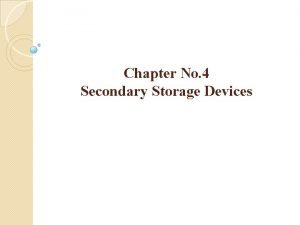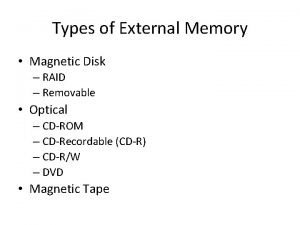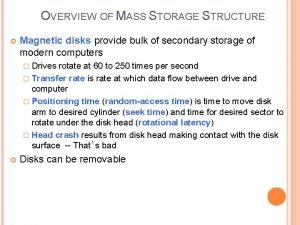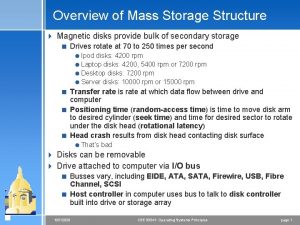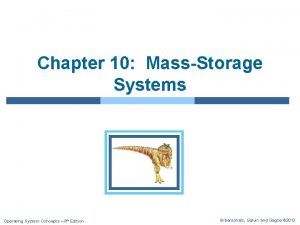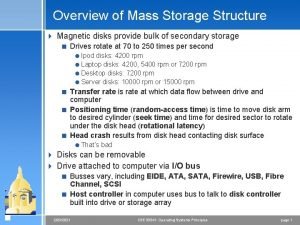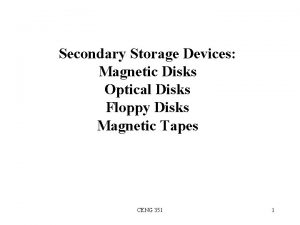Overview of Mass Storage Structure 4 Magnetic disks







- Slides: 7

Overview of Mass Storage Structure 4 Magnetic disks provide bulk of secondary storage < Drives rotate at 70 to 250 times per second = Ipod disks: 4200 rpm = Laptop disks: 4200, 5400 rpm or 7200 rpm = Desktop disks: 7200 rpm = Server disks: 10000 rpm or 15000 rpm < Transfer rate is rate at which data flow between drive and computer < Positioning time (random-access time) is time to move disk arm to desired cylinder (seek time) and time for desired sector to rotate under the disk head (rotational latency) < Head crash results from disk head contacting disk surface = That’s bad 4 Disks can be removable 4 Drive attached to computer via I/O bus < Busses vary, including EIDE, ATA, SATA, Firewire, USB, Fibre Channel, SCSI < Host controller in computer uses bus to talk to disk controller built into drive or storage array 10/7/2020 CSE 30341: Operating Systems Principles page 1

Moving-head Disk Mechanism 10/7/2020 CSE 30341: Operating Systems Principles page 2

Disk drives Desktop disk Server disk 10/7/2020 CSE 30341: Operating Systems Principles page 3

Hard disk head, platter and disk crash 10/7/2020 CSE 30341: Operating Systems Principles page 4

Disk Structure 4 Disk drives are addressed as large 1 -dimensional arrays of logical blocks, where the logical block is the smallest unit of transfer. 4 The 1 -dimensional array of logical blocks is mapped into the sectors of the disk sequentially. < Sector 0 is the first sector of the first track on the outermost cylinder. < Mapping proceeds in order through that track, then the rest of the tracks in that cylinder, and then through the rest of the cylinders from outermost to innermost. 10/7/2020 CSE 30341: Operating Systems Principles page 5

Magnetic tape 4 Was early secondary-storage medium 4 Relatively permanent and holds large quantities of data 4 Access time slow 4 Random access ~1000 times slower than disk 4 Mainly used for backup, storage of infrequentlyused data, transfer medium between systems 4 Kept in spool and wound or rewound past readwrite head 4 Once data under head, transfer rates comparable to disk 4 20 -200 GB typical storage 4 Common technologies are 4 mm, 8 mm, 19 mm, LTO -2 and SDLT 10/7/2020 CSE 30341: Operating Systems Principles page 6

Tape pictures 10/7/2020 CSE 30341: Operating Systems Principles page 7
